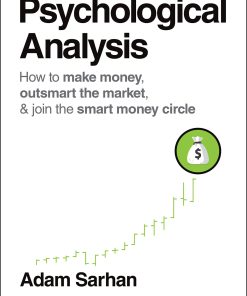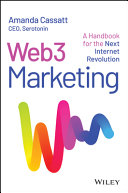The Money Revolution How to Finance the Next American Century 1st Edition by Richard Duncan 1119856264 9781119856269
$50.00 Original price was: $50.00.$25.00Current price is: $25.00.
The Money Revolution How to Finance the Next American Century 1st Edition by Richard Duncan- Ebook PDF Instant Download/Delivery: 1119856264, 9781119856269
Full download The Money Revolution How to Finance the Next American Century 1st Edition after payment

Product details:
ISBN 10: 1119856264
ISBN 13: 9781119856269
Author: Richard Duncan
Learn how the United States can stop and reverse its relative economic decline in this fascinating analysis of American Money, Credit and Capital In The Money Revolution: How to Finance the Next American Century, economist and bestselling author Richard Duncan lays out a farsighted strategy to maximize the United States unmatched financial and technological potential. In compelling fashion, the author shows that the United States can and should invest in the industries and technologies of the future on an unprecedented scale in order to ignite a new technological revolution that would cement the country’s geopolitical preeminence, greatly enhance human wellbeing, and create unimaginable wealth. In this book, you will find: An important new history of the Federal Reserve that details the transformation of the country’s central bank from the passive lender of last resort created by its founders in 1913 into the world’s most powerful economic institution today. A fascinating discussion of the evolution of money and monetary policy in the United States over the past century. An examination of the role that credit has played in generating economic growth, especially since Dollars ceased to be backed by Gold five decades ago. A detailed description of the country’s capital structure and its dangerous deficiencies. An urgent call-to-action for the United States to begin a multi-trillion-dollar investment program targeting industries of the future. The Money Revolution: How to Finance the Next American Century is a page-turning read ideal for anyone interested in the future of the United States. Its gripping thesis offers anyone with a personal or professional interest in America’s economy, financial system, or geopolitical position in the world an engrossing intellectual journey.
The Money Revolution How to Finance the Next American Century 1st Table of contents:
PART I: Money
Introduction
CHAPTER 1: The Power of the Fed
The Power to Create Credit
In the Beginning
The Fed’s Balance Sheet: Two Snapshots
Furnishing an Elastic Currency
Providing Credit
Federal Reserve Credit and the Monetary Base
Constraints
Conclusion
Appendix One
Appendix Two
Notes
CHAPTER 2: 1914 to 1920: World War I
The Balance Sheet
Notes
CHAPTER 3: 1920 to 1930: After the War
The Balance Sheet
Conclusion
Notes
CHAPTER 4: 1930 to 1941: The Great Depression
Total Assets
The Great Depression
Gold
Gold Coverage
Excess Reserves
Notes
CHAPTER 5: 1941 to 1945: World War II
War Financing
Balance Sheet
Federal Reserve Credit and Commercial Bank Credit
Deposit Creation by Commercial Banks
Bretton Woods
Conclusion
Notes
CHAPTER 6: 1945 to 1971: The Bretton Woods Era
Assets
Balance Sheet
Federal Reserve Credit
The End of Gold-Backed Money
Notes
CHAPTER 7: 1971 to 2007: After Gold
Assets
Liabilities
Conclusion
Notes
PART II: Credit
Introduction
CHAPTER 8: Credit Creation by the Banking System
Commercial Banks Create Money, Too
How the Process Works
Two Factors Determine How Much Credit Banks Can Create
Credit Creation by Commercial Banks: 1914 to 2007
Why Bank Credit Grew Much Faster than Bank Reserves
Notes
CHAPTER 9: Credit Creation by the Financial Sector
Creditopia
The Non-Bank Financial Sector Creditors
Funding Through Credit Creation
Credit Without Reserves
Appendix
Notes
CHAPTER 10: Credit Creation by ForeignCentral Banks
The Financial Sector Is Not Alone
The Rest of the World
The Liquidity Gauge
Notes
CHAPTER 11: Creditism
A Credit Bonanza
The Debtors
Credit and Wealth
Credit Creation, Not Savings
Creditism’s Achilles’ Heel
Notes
CHAPTER 12: 2007 to 2016: Crisis and Response
Introduction
Meltdown
Saving the Financial System Through Discounting Operations
Reflating the Economy Through Open Market Operations
Why QE Worked
The Fed Was Helped by Other Central Banks
Four Charts
Conclusion
Notes
CHAPTER 13: Creditism Between the Crises
Creditism in Crisis
Financial Sector Debt
Non-financial Sector Debt
Insufficient Credit Growth
Asset Price Inflation
Tightening
Capitulation
Notes
CHAPTER 14: Pandemic
The Policy Response
The Details: 2020 vs. 2008
Notes
CHAPTER 15: Inflation
A Century of Inflation
1919 to 1929
The 1930s
The 1940s
The 1950s
The 1960s
The 1970s
The 1980s
The 1990s
2000 to Mid-2008
Mid-2008 to 2019
2020 to Mid-2021
Notes
PART III: The Future
Introduction
CHAPTER 16: America Must Invest
Why a Large-Scale Investment Program Is Possible
Why a Large-Scale Investment Program Is Necessary
How Much to Invest?
Which Industries to Target
How to Structure the Investments
Government Sharing in the Profits
Conclusion
Notes
CHAPTER 17: Inadequate Investment
Capital Grows
Investment
The Competition
What’s to Be Done?
Note
CHAPTER 18: R&D: The Future Depends on It
Current Investment in R&D
Allocation
Types of R&D
International Comparisons
The Second Great Divergence
Notes
CHAPTER 19: America Can Afford to Invest
Estimates for Government Debt and GDP
The CBO’s Pre- and Post-Pandemic Projections
Investing in the Future
Extremely Conservative Assumptions
Toward a More Realistic Scenario
What If Government Debt Is Higher?
Notes
CHAPTER 20: Monetize the Debt
Financing the Investment Program at No Cost
Seigniorage and Bank Reserves
The Fed’s Balance Sheet Projected to 2031
What Could the Negative Consequences Be?
Appendix
Notes
CHAPTER 21: An Investment Revolution
Introduction
Government Investment in R&D
Working Miracles
America’s New Manifest Destiny
Notes
Conclusion
About the Author
Bibliography
Books
Acts of Congress
Papers
Other Sources
People also search for The Money Revolution How to Finance the Next American Century 1st:
how to get 9 million dollars on sims 4
9 revolution
8 ball pool how to make money
8 money
Tags:
Richard Duncan,Money,Revolution,Finance
You may also like…
Business & Economics - Professional Finance
The Philosophy of Money and Finance 1st Edition Joakim Sandberg
Business & Economics - Responsibility and Business Ethics
Business & Economics - Sales & Marketing
Web3 Marketing: A Handbook for the Next Internet Revolution 1st Edition Amanda Cassatt
Relationships & Lifestyle - Diet & Nutrition
Biography & Autobiography - Essays
Politics & Philosophy - Social Sciences
Politics & Philosophy - Politics
What Next How to Get the Best From Brexit 1st Edition Daniel Hannan











